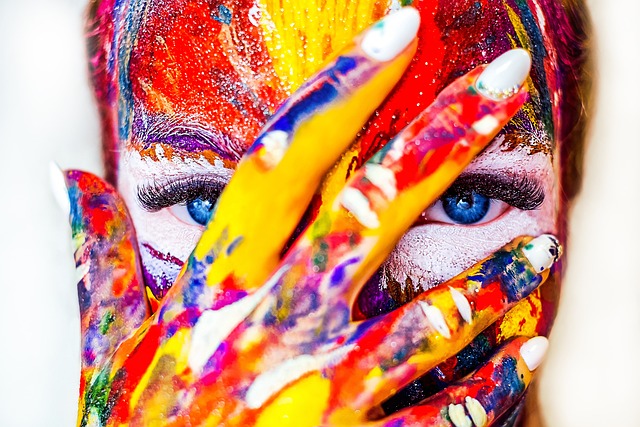
The concept of “creative flow” refers to the optimal state where artists find themselves fully immersed and engaged in their artistic pursuits, with ideas and creativity unfolding seamlessly. Achieving this state often involves harnessing various tools and techniques that facilitate focus and limit distractions.
Integrating a timer into your artistic practice serves as a powerful strategy to foster this creative flow. It helps in structuring your work sessions, allowing for dedicated time slots to explore, create, and refine your artwork, consequently enhancing productivity and artistic fulfillment.
Structuring Your Artistic Sessions
2.1 Identifying Key Artistic Activities
To build a robust and effective artistic practice, it’s pivotal to identify key activities that constitute your creative process. This could encompass various stages such as brainstorming, drafting, revising, and finalizing. Within these stages, specific activities might include sketching, selecting materials, experimenting with different mediums, or exploring various techniques and styles. Understanding the constituent elements of your practice not only lends clarity but also helps in systematically navigating through the project, preventing overwhelm and promoting a richer engagement with your art.
It’s beneficial to incorporate breaks for reflection and assessment, where you can step back and evaluate the evolving artwork, making necessary adjustments and fueling further creativity. By establishing a clear pathway of activities, artists can navigate through their sessions with purpose and direction, enhancing the quality of their output.
2.2 Setting Realistic Timeframes for Each Phase of Creation
Once the key artistic activities have been identified, the next vital step is to assign realistic timeframes to each phase of creation. Utilizing a timer can immensely assist in this endeavor, facilitating a structured approach to your art sessions. Setting defined time limits encourages focus and prevents burnout by averting prolonged periods of continuous work, which can sometimes stifle creativity.
Moreover, time-bound sessions can foster a sense of urgency and excitement, often sparking innovative ideas and solutions. By segmenting the creative process into manageable chunks, artists can approach their work with renewed energy and perspective in each session, enhancing the overall flow and productivity.
Incorporating a timer into your practice not only brings discipline but also allows for a harmonious balance between intense focus and necessary breaks, cultivating an environment where creativity can flourish abundantly. This strategy transforms the artistic practice into a more enriching and rewarding experience, steering artists steadily towards the realization of their visions.
Implementing the Timer Tool in Your Practice
Setting Up Your Timer for Artistic Success
Incorporating a timer tool into your artistic routine is a strategic move towards nurturing a productive and inspiring work environment. The first step in this process involves delineating the various stages of your art practice and setting up time slots for each. It is prudent to allow a considerable amount of time for exploration and spontaneity, essential components in the creation of art. The timer serves as a guide, enabling you to dedicate undivided attention to each segment of the artistic process, fostering deeper immersion and engagement with your work.
Moreover, the setup should also accommodate moments of reflection and potential adjustments, allowing the flexibility to extend or shorten time slots based on the natural flow of creativity. The objective is to create a supportive framework that complements your unique artistic rhythm, facilitating a balanced workflow that encourages both productivity and innovation.
Tips for Maximizing Timer Efficiency During Creative Sessions
To ensure the optimal utilization of the timer tool, here are a few tips to enhance its efficiency in bolstering your creative sessions:
- Customize Alerts: Personalize your timer with alerts that are neither too jarring nor too subtle, promoting a gentle transition between different phases of creation.
- Buffer Time: Incorporate buffer times between sessions to mentally prepare and transition smoothly from one activity to the next, preventing creative burnout.
- Flexible Adjustment: Remain open to modifying the timer settings as needed, adapting to the natural ebb and flow of the creative process.
- Reflective Breaks: Use the timer to schedule short breaks for reflection, a vital practice to assess progress and recalibrate your artistic direction.
- Progress Tracking: Leverage the timer tool to track your progress over time, offering insights into your patterns of productivity and areas for improvement.
By following these tips, artists can maximize the potential of the timer tool, fostering a nurturing environment that amplifies creativity and facilitates a fulfilling and successful artistic practice.
Case Studies: Artists and Creatives Who Thrived with Timer-Assisted Practices
Individual Success Stories
Across the creative spectrum, many artists have found renewed vigor and productivity by incorporating timer-assisted practices into their routines. Take, for instance, a renowned sculptor who started using a timer to delineate phases of conceptualization, carving, and refining. This segmented approach resulted in not only higher productivity but also artworks of finer detail and deeper expression.
Similarly, a budding writer began to use a timer to manage writing sprints, allowing focused bursts of creativity followed by brief periods of relaxation. This practice remarkably improved the quality of writing, unveiling layers of depth and nuance in storytelling that were previously untapped. These instances are testament to the transformative potential that a timer-assisted regimen can bring to an artist’s practice, enhancing both the quality and quantity of creative output.
Sarah´s story
In the vibrant world of digital art, a young artist named Sarah revolutionized her practice through the adept use of a timer tool. Initially struggling with maintaining a consistent workflow, she stumbled upon the idea of integrating a timer into her daily routine. Sarah started allocating specified time slots for brainstorming, sketching, and digital rendering, punctuated by short breaks to recharge her creative energies.
The transformation was profound. Not only did her productivity soar, but the quality of her artwork reached new heights, resonating with deeper emotion and complexity. Moreover, she found herself enjoying the process more, as the timer helped to remove the burden of time management from her shoulders, allowing her to immerse fully in the creative flow without worry. Sarah’s story stands as a glowing testament to the efficacy of a timer-assisted practice, demonstrating how structured time management can unleash untapped potential and foster artistic brilliance.
Adjustments and Growth: Learning from Experience
Embracing a timer-assisted practice is a dynamic process that often necessitates adjustments based on individual experiences. Many artists reported a phase of trial and error before settling on a routine that harmoniously blended with their creative rhythm.
For instance, a painter initially struggled with rigid time slots, finding them restrictive and stifling to the fluidity of creative expression. However, with adjustments that allowed for more flexible timeframes, the artist found a balanced rhythm that fostered both discipline and spontaneity.
Furthermore, many have found value in using the timer for periodic self-assessments, setting aside time to evaluate their progress and make informed adjustments. This iterative process of learning and growing has been instrumental in nurturing a more insightful and enriched artistic practice.
Thus, by being receptive to change and growth, artists can finely tune their timer-assisted practices to become potent catalysts for fostering creativity and achieving artistic success.
Conclusion
Recap: The Benefits of a Timer-Assisted Creative Practice
As we draw this discussion to a close, it’s pertinent to revisit the manifold benefits of integrating a timer tool into your creative practice. This innovative approach aids in streamlining the artistic process, fostering an environment where concentration and creativity thrive in tandem. Artists find themselves more attuned to their work, experiencing heightened levels of engagement and satisfaction.
Furthermore, a timer-assisted practice paves the way for a balanced workflow, where periods of intensive creativity are complemented by necessary breaks, preventing burnout and nurturing sustainable productivity. This methodical approach facilitates a deep dive into the creative realm, allowing for a rich exploration of ideas and techniques, ultimately culminating in artworks of greater depth and resonance.
Your Action Plan: Steps to Incorporate Timer into Your Artistic Journey
Embarking on a timer-integrated artistic journey necessitates a well-thought-out plan of action. Here are some steps to guide you on this transformative path:
- Evaluate Your Current Practice: Begin by assessing your existing workflow, identifying areas where time management can enhance productivity and satisfaction.
- Define Your Artistic Activities: Clearly delineate the phases of your creative process, mapping out the key activities that form the backbone of your artistic practice.
- Implement the Timer Tool: Start incorporating the timer tool into your routine, setting realistic time frames for each activity, and allowing space for breaks and reflection.
- Personalize Your Approach: Customize the timer settings to suit your personal rhythm, fostering a practice that is both structured and flexible, adapting to your creative needs.
- Feedback and Adjustments: Regularly evaluate the effectiveness of this new approach, being open to making adjustments based on your experiences and feedback.
- Celebrate Your Progress: Take time to acknowledge and celebrate the progress and innovations that emerge from this renewed practice, nurturing a positive and fulfilling artistic journey.
By following this action plan, artists can venture into a rewarding journey, where creativity flourishes under the nurturing gaze of structured time management, fostering artworks of remarkable depth and brilliance.
